Exploratorium Teacher Institute workshop 5 November 2011, Linda Shore, Paul Doherty, Tory Brady.
Hertzprung Russell Diagram Stellar luminosity versus Temperature.
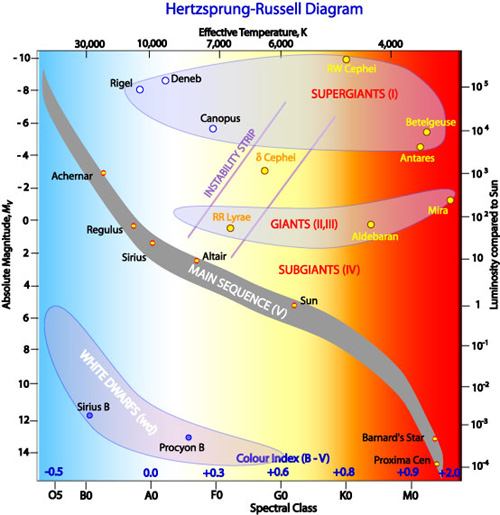
Star Color The blackbody spectrum of an object is a function of its temperature. The wavelength of the maximum of the spectrum is linearly proportional to the temperature, this is Wein's displacement law. To the human eye the color of a blackbody changes from red through orange to yellow to white to bluish white as the temperature of the blackbody increases. The amount of power radiated by a blackbody per meter squared is proportional to the fourth power of the temperature, known as Stephan's Law. The luminosity of a star is a function of its temperature and its area.
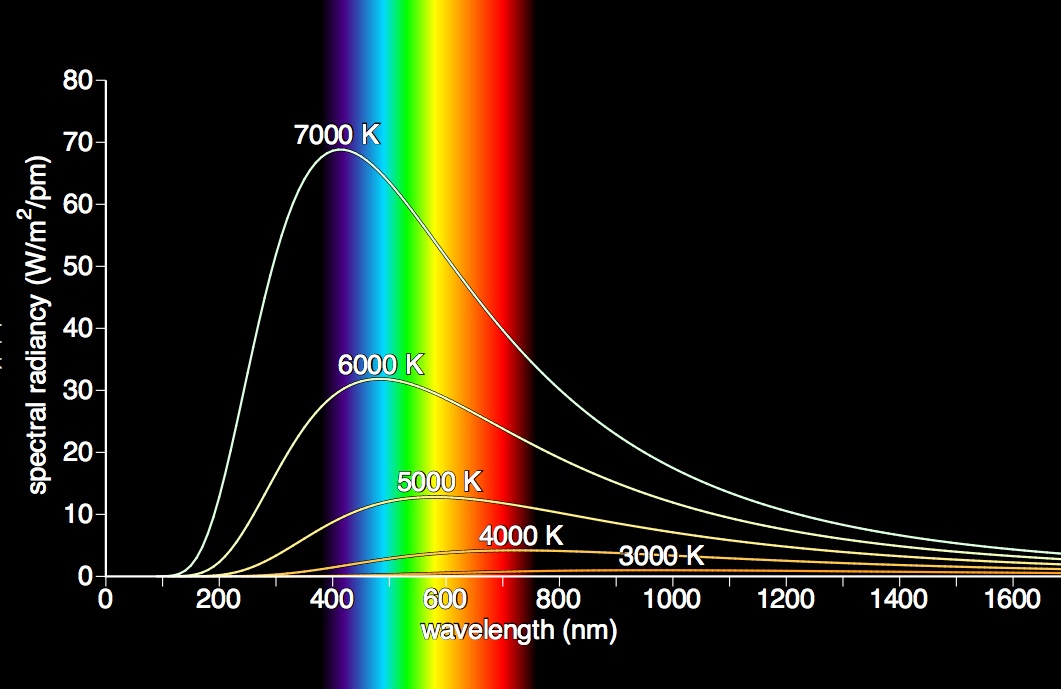
Blackbody spectrum versus temperature, note the short wavelength shift of the maximum, and the rapid increase in radiancy with temperature.The human color spectrum is shown.
Star Lifetimes OBAFGKM
Life of stars website http://nothingnerdy.wikispaces.com/E5+STELLAR+PROCESSES+AND+STELLAR+EVOLUTION

Stellar Evolution
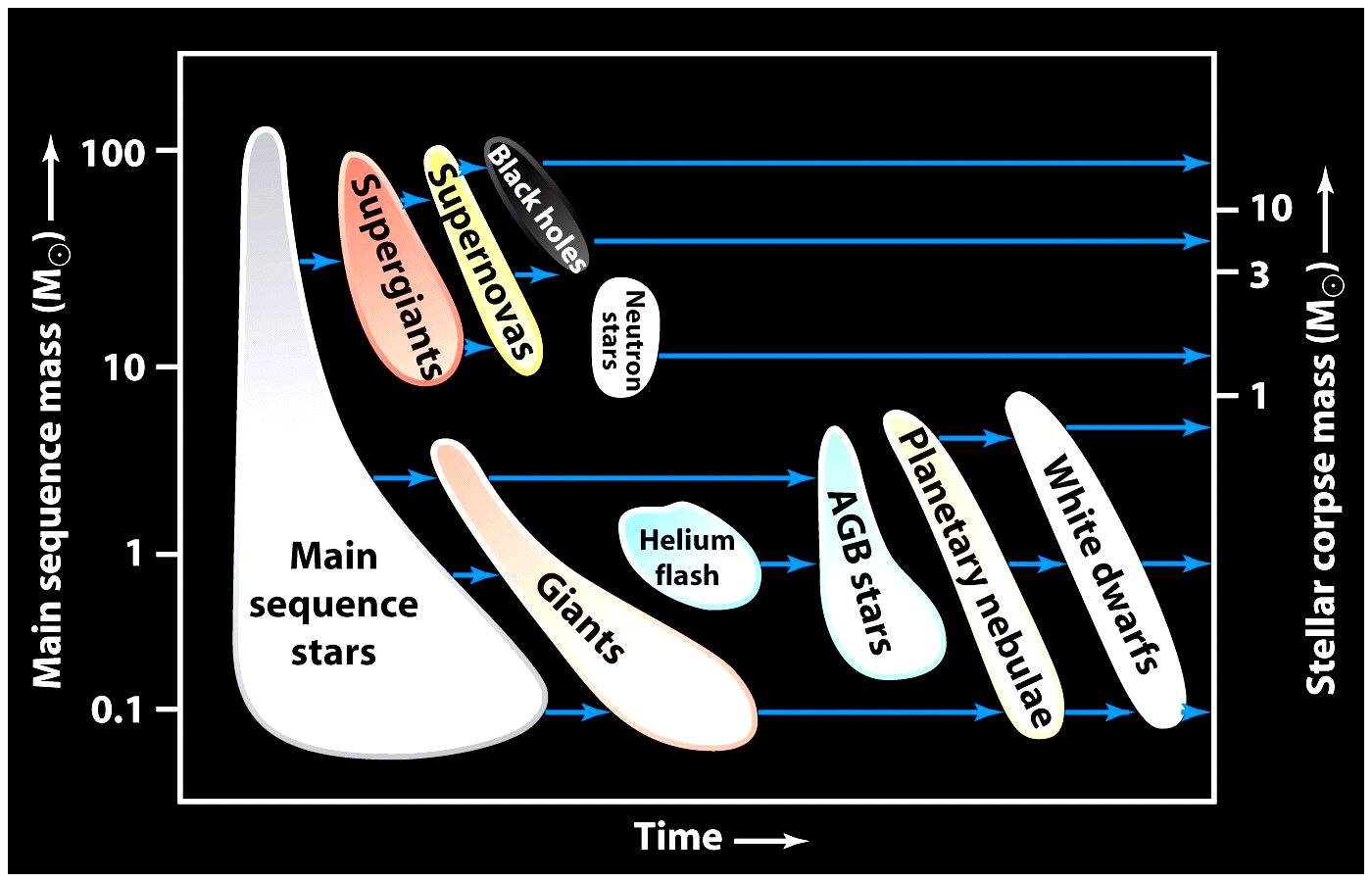
Habitable Zones a pdf Planets that orbit stars at a distance that allows water to be liquid are considered to be in the habitable zone. The radius of such an orbit depends on the temperature of the star and its radius.
Fraunhofer lines You can observe dark lines in the continuous emission spectrum of the sun by using a commercial spectrometer or by building your own using a compact disk.

Fraunhofer lines by Fraunhofer.
Comte de Bufon "Of one thing I am certain, we will never know what the stars are made of."
Fraunhofer: The sun is 94% hydrogen 6% helium 0.13% other. Percent by number of atoms. (If you see the data that the sun is 76% hydrogen and 24% helium that is the perecent by mass.)
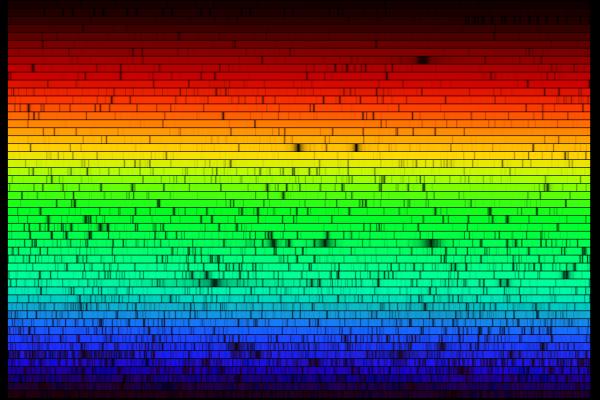
The spectrum of the sum showing Fraunhofer lines from the NOAO.
Fraunhofer lines identified http://www.harmsy.freeuk.com/fraunhofer.html
Classic questions:
If the sun is made of hydrogen gas, why is its spectrum continuous and not made up of the spectral lines of hydrogen?
If during the emission of a photon by a hydrogen atom tha atom is hit by another atom, ion, or electron the energy of the emitted photon will be changed. The result is that the spectral lines emitted by hydrogen in the photosphere of the sun are broadened into the continuous blackbody spectrum.
Why then do the spectral lines of hydrogen appear as dark fraunhofer lines in the spectrum of the sun? The blackbody spectrum of the photosphere of the sun passes through less dense gasses above the photophere. These less dense gasses do no undergo collisions as they absorb and re-emit photons. So they absorb photons with a narrow spread of energies. In addition they absorb the photons heading from the photosphere to the earth, and re-emit them in all other directions crating a dark line in the spectrum of the sun.
Helium was discovered by observing its sectral lines in the in the Fraunhofer spectrum of the sun.
Build a spectrometer with a compact disk To see the fraunhofer lines with a homemade spectrometer you will need high enough resolution that using a longer tube, perhaps a meter and a narrower slit under 0.5 mm will help. Never look at the sun, look at the solar spectrum by looking at white paper in the sun.
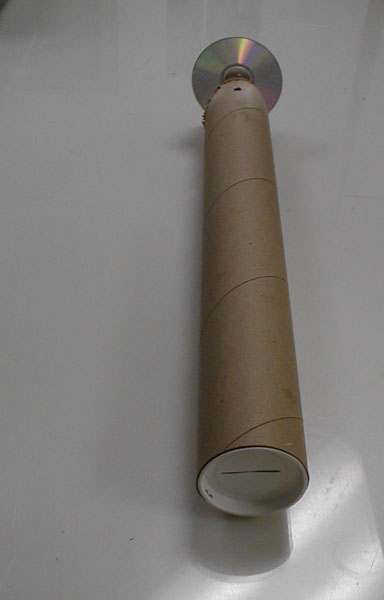
A spectrometer made with a compact disk, note the CD, the slit, and the view hole.
The Power of the Sun Use a photometer to compare the brightness of a 200 Watt lamp to the sun, then use the inverse square law to calculate the power of the sun.
Solar Thermal Use a liquid crystal thermal postcard or a thermometer in a water bath to measure the power of the sun by comparing its radiation to that of a 200 watt lamp.
References
Star Wikipedia http://en.wikipedia.org/wiki/Star
A guide to stars by Australia's CSIRO http://outreach.atnf.csiro.au/education/senior/astrophysics/stellarevolution_hrintro.html